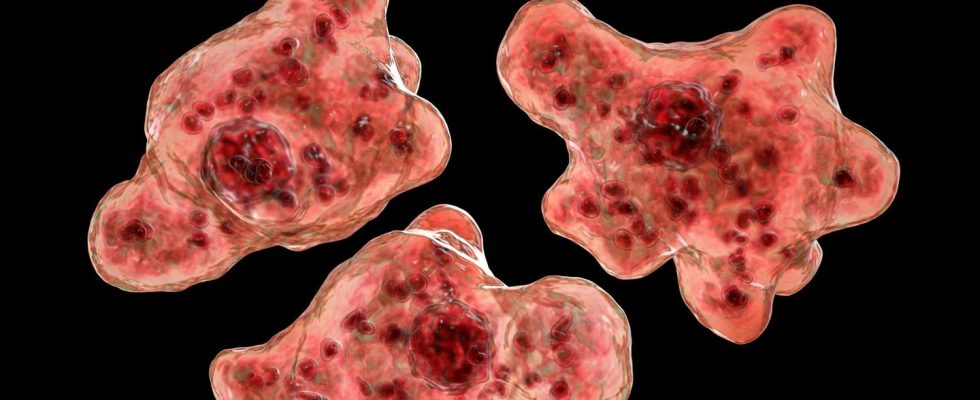Florida
Almost all cases end fatally: teenager survives infection with brain-eating amoeba
Pathogen Naegleria fowleri under the microscope: infections are very rare, but usually fatal
© agefotostock / Imago Images
While swimming, a teenager in Florida became infected with the pathogen Naegleria fowleri – a so-called brain-eating amoeba. The chances of survival were very poor, but the 14-year-old is still making progress.
A year ago, hardly anyone would have thought that 14-year-old Caleb Ziegelbaur was still alive. The teenager became infected last July while swimming in a bay off Florida with the pathogen Naegleria fowleri, which is often referred to as “brain-eating amoeba”.
Infections with the pathogen are very rare, but the cases are almost always fatal. Even with Caleb Ziegelbaur there was little hope. Six days after swimming, the American developed typical symptoms: headache and fever. When his mother took him to the hospital, doctors prepared her for the worst. “The neurologist came and said to us, ‘You still have four days with your son,'” Jesse Ziegelbauer recalled in an interview with the television network NBC2.
Amoeba attacks the brain
But things turned out differently. After a long period of suffering, her son recovered, although he still has to live with severe limitations. “Last week we went to the doctor and he said, ‘I just wanted to tell you that these are the longest four days of my life,'” smiles Jesse Ziegelbauer. Caleb was in the hospital for eight months, followed by intensive rehabilitation. In March he was finally allowed to come home.
The teenager is still barely able to express himself verbally, mostly communicating by moving his eyebrows – and that too only five months after the infection. He is also able to stand up, but is mostly confined to a wheelchair because of the damage the pathogen has done to his brain. But that’s great progress in the face of an illness from which there is little hope of recovery.
97 percent of cases in the US ended fatally
According to the US health agency, out of 154 cases between 1962 and 2022, only four survived the infection. This corresponds to a death rate of 97 percent. The pathogen occurs in contaminated warm fresh water, mostly in the tropics or subtropics. It enters the brain of swimmers through the nose and triggers meningitis and tissue reactions. In most cases, these quickly lead to death. Typical symptoms are headaches, a stiff neck, sensitivity to light, nausea and vomiting.


